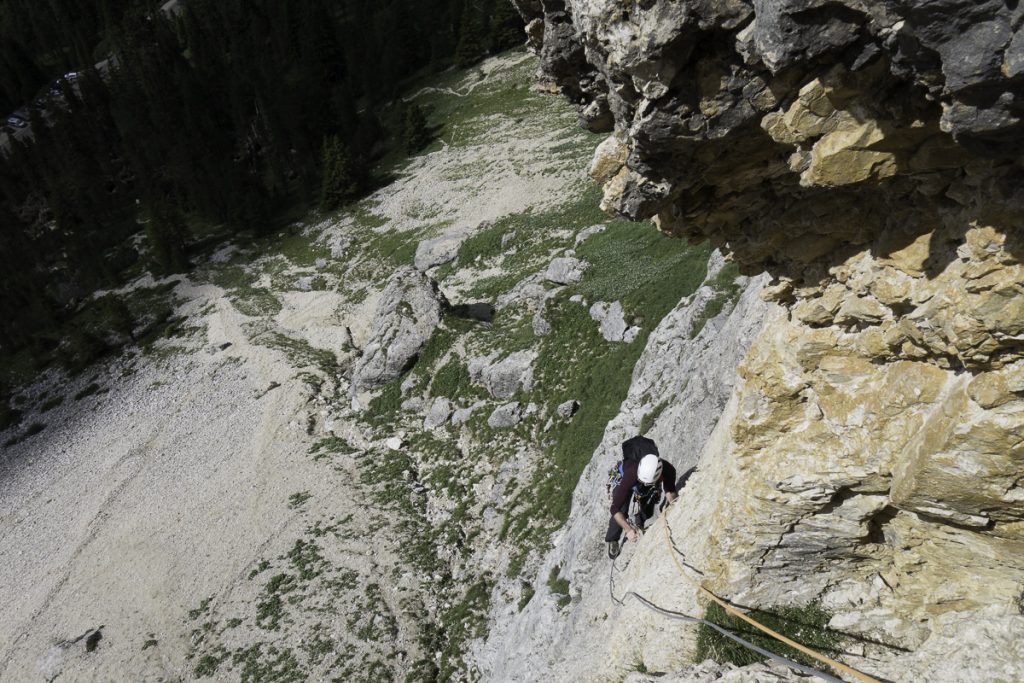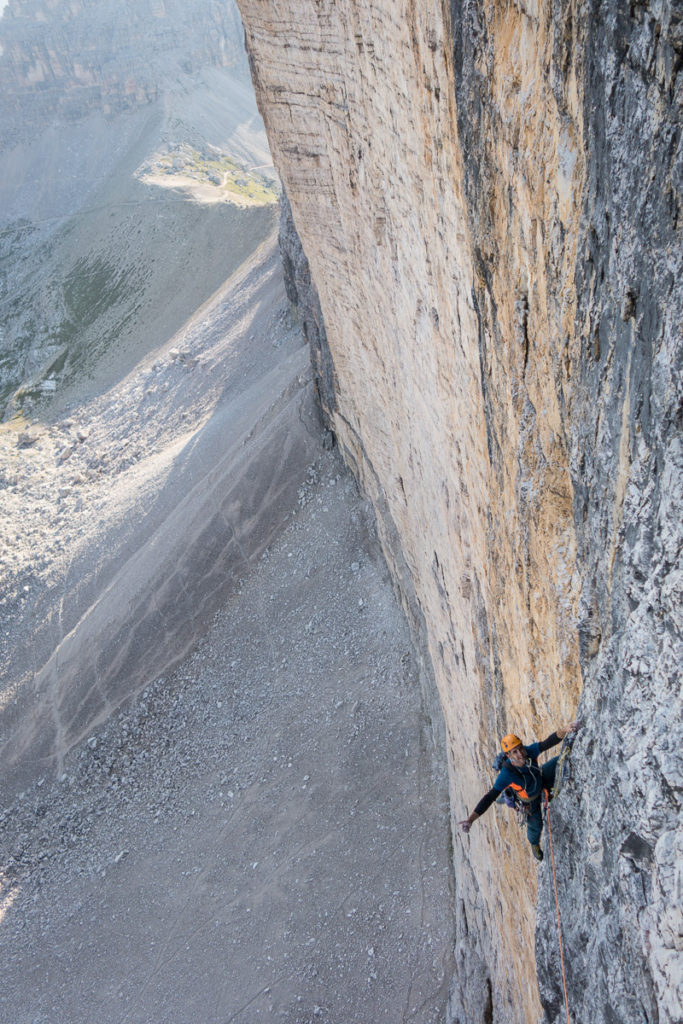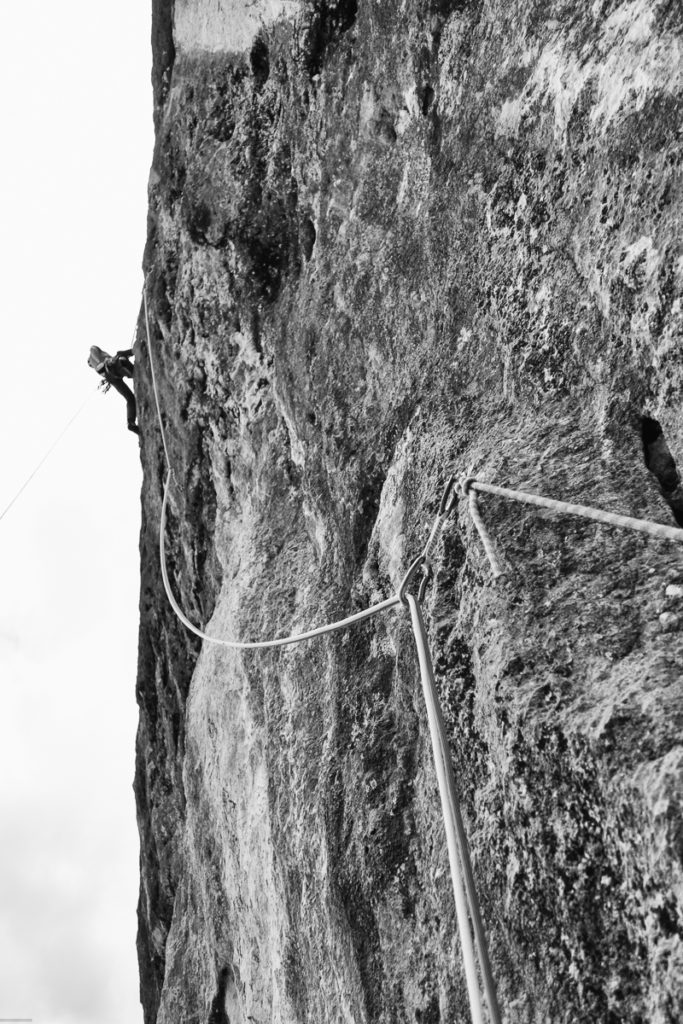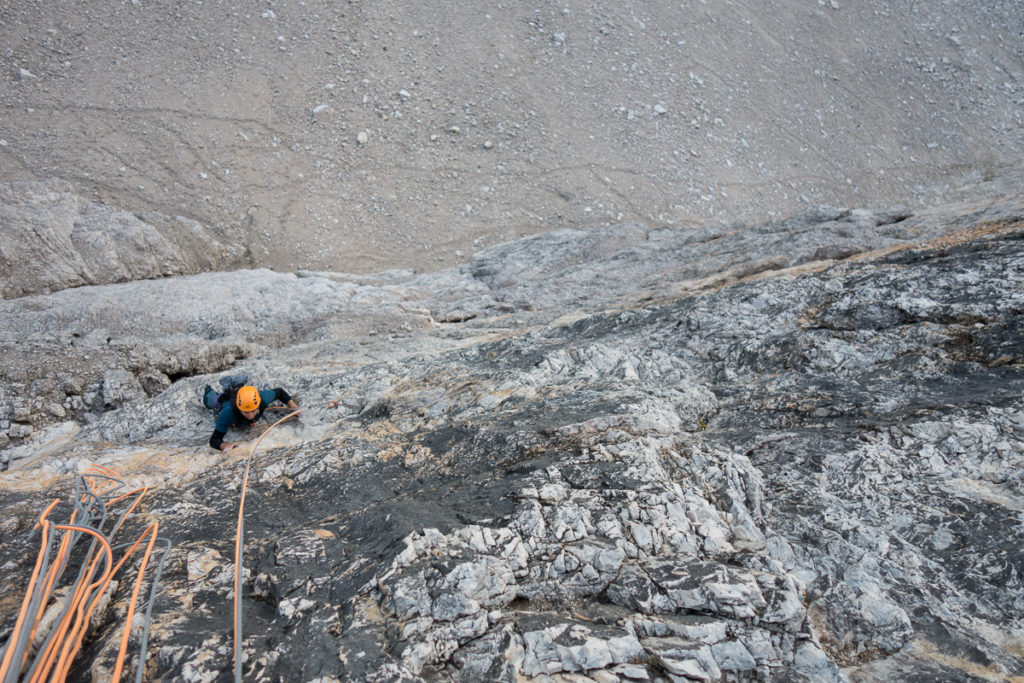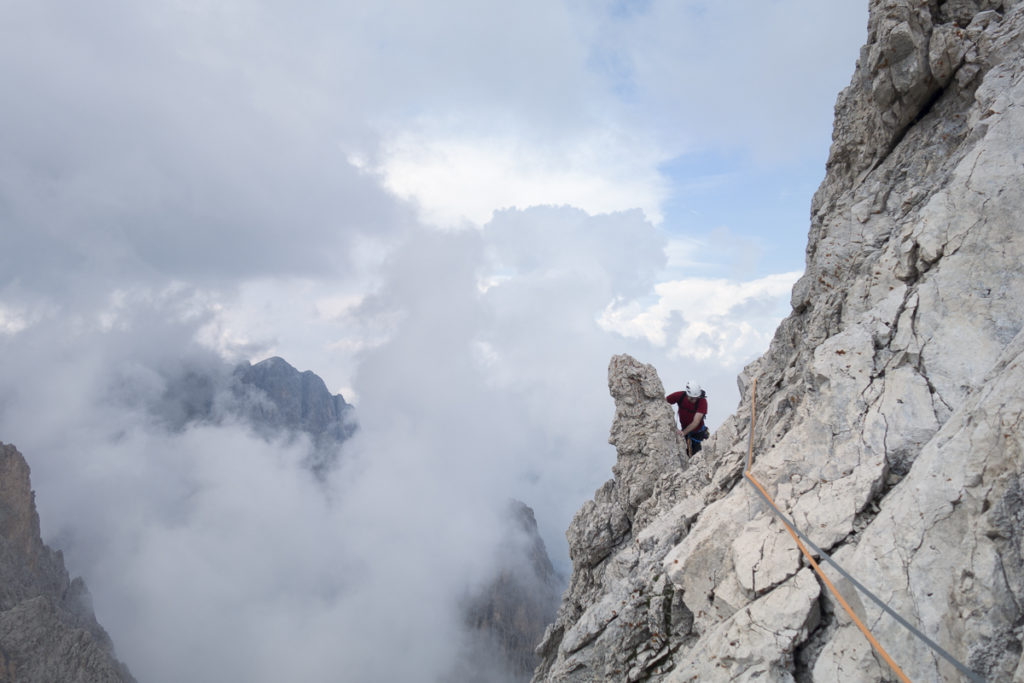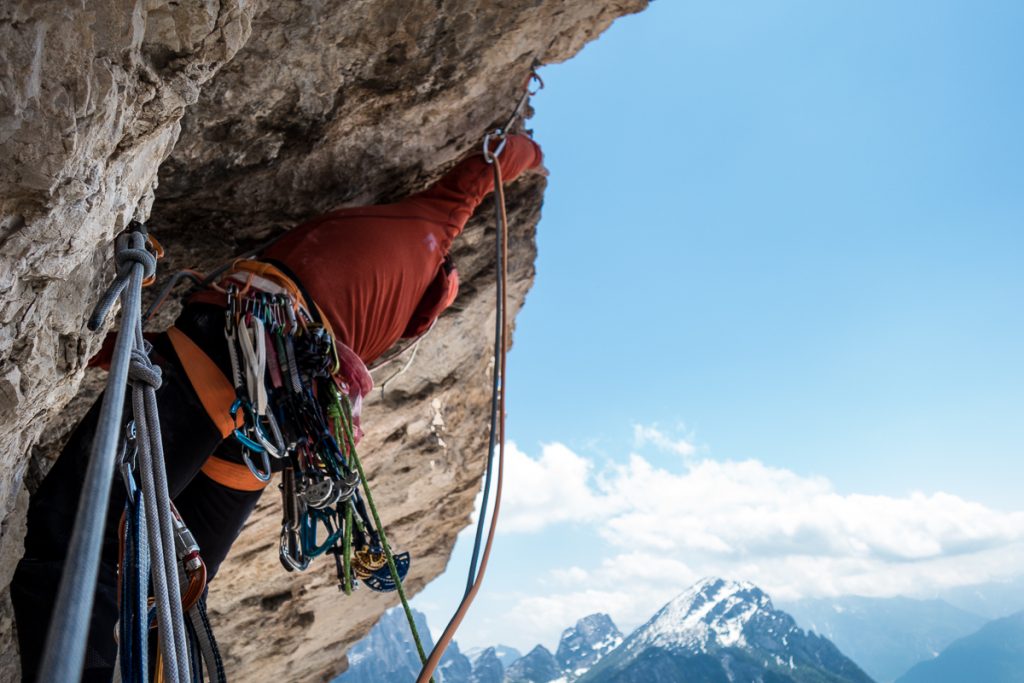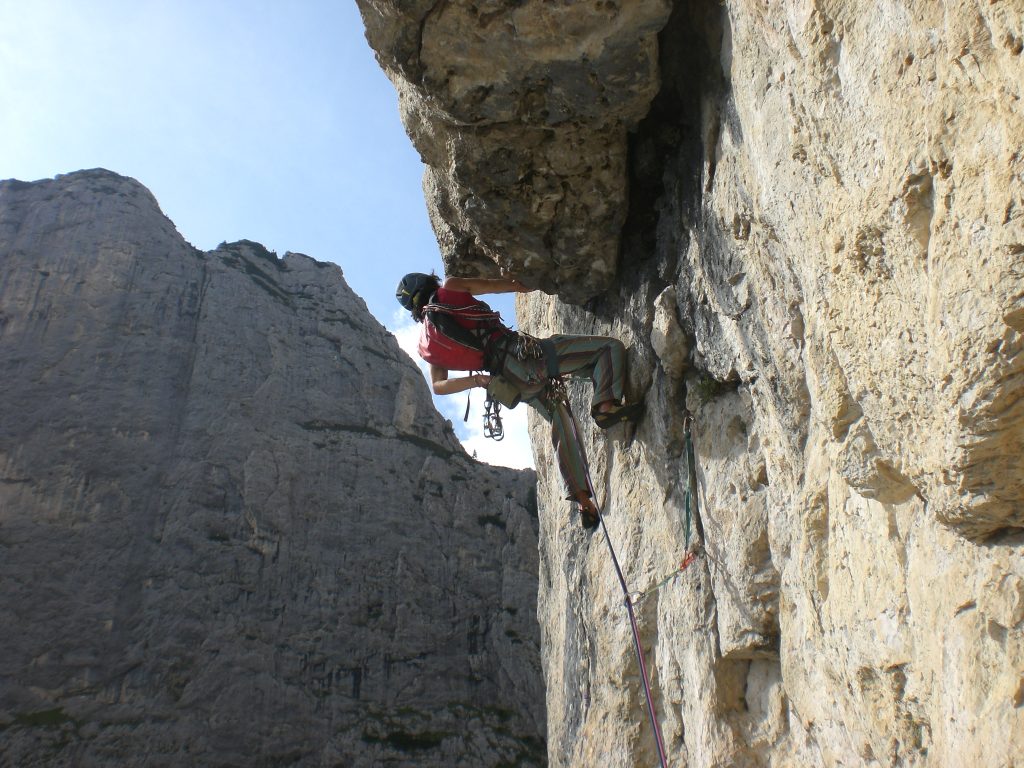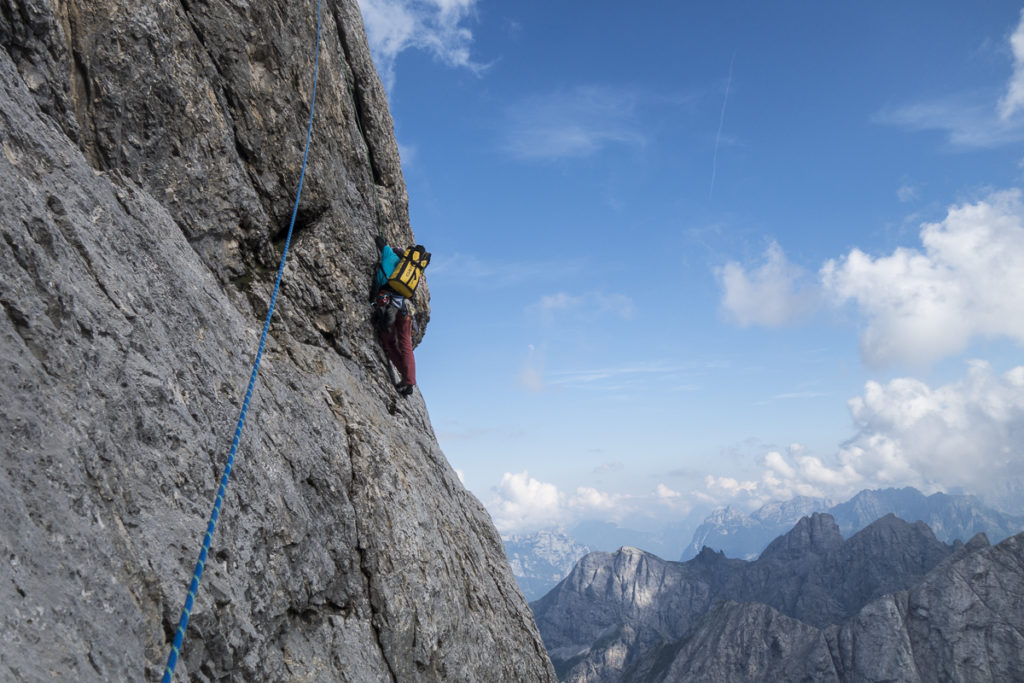climbing demanding multi pitch classic routes
This section is about classic routes from medium to high difficulty (see here for easy -medium routes). It goes without saying that the examples here cannot possibly be exhaustive. Rather, they represent an overview giving a taste of what to expect in the pursuit of these Classic climbing routes. The Dolomites, in fact, thanks to their 16000 km extension and the around 50 different mountain ranges, offer a number and variety of classic rock climbing routes which is probably unrivaled in the world. Just to clear things up, with “Classic” we mean an ascent of moderate difficulty (up to grade VI-VI+) with traditional protection and a good knowledge of the route, mostly gathered by many repetitions by other climbers.


